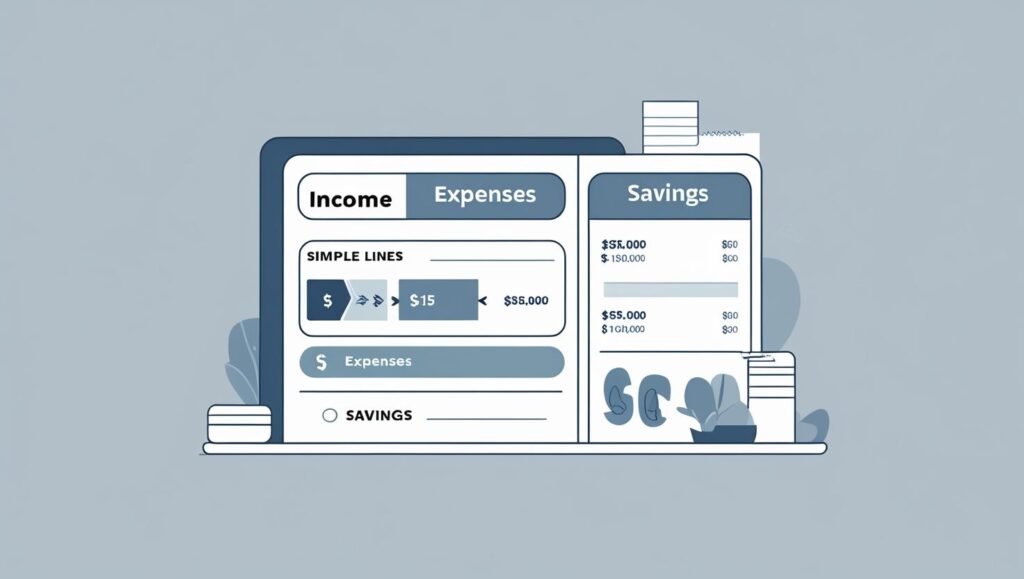How to Create a Minimalist Budget That Works for You
In a world often driven by consumerism, the idea of simplifying your financial life can feel revolutionary. We’re constantly bombarded with messages to buy more, spend more, and acquire more, leading many of us into a cycle of financial stress and clutter. But what if there was a way to gain control over your money, reduce anxiety, and align your spending with your true values? Enter the power of a **minimalist budget**. Far from being about deprivation, a minimalist budget is about intentionality – stripping away the unnecessary to focus on what truly matters to you. If you’re ready to ditch complicated spreadsheets and endless tracking, and instead cultivate a financial system that brings clarity and peace of mind, this guide will show you how to create a simple, effective, and sustainable budget that genuinely works for your life.
Why Embrace a Minimalist Approach to Budgeting?
Traditional budgeting often conjures images of restrictive rules, meticulous tracking, and constant self-denial. It can feel overwhelming, unsustainable, and ultimately, demotivating. A minimalist budget flips this script. It’s not about cutting every single expense, but about consciously identifying and eliminating spending that doesn’t bring value to your life, allowing you to amplify the spending that does. The benefits extend beyond just saving money; they include reduced financial stress, greater clarity on your financial goals, and the freedom to direct your resources towards experiences and investments that truly enrich you.
Beyond Savings: The Freedom of Financial Clarity
The core philosophy of minimalism is to remove the excess to make space for the essential. Applied to finances, this means clearing away mental clutter related to money. You stop worrying about every single dollar spent on trivialities and start focusing on the bigger picture. This shift empowers you to make conscious choices, leading to a deeper understanding of your financial flow and a greater sense of control over your economic destiny. It frees up mental energy that was once consumed by financial anxiety, allowing you to direct it towards more productive and fulfilling pursuits.
Step-by-Step: How to Create a Minimalist Budget
Ready to simplify your financial life? Here’s how to create a minimalist budget that works for you, broken down into actionable steps.
1. Understand Your Income (The Foundation)
Before you can budget, you need a clear picture of how much money you have coming in. This seems obvious, but many people overlook irregular income or fail to account for taxes and deductions. Calculate your reliable net monthly income – the amount that actually lands in your bank account after all deductions.
- For Salaried Employees: Use your net monthly pay.
- For Freelancers/Irregular Income: Average your net income over the past 3-6 months, or use a conservative estimate.
2. Identify Your Fixed Expenses (The Non-Negotiables)
These are the expenses that are roughly the same every month and are typically hard to change in the short term. List them out thoroughly.
- Rent/Mortgage
- Loan Payments (student, car, personal)
- Insurance Premiums (health, car, home)
- Subscriptions (streaming services, gym memberships – *evaluate these critically in the next step!*)
- Utilities (often fluctuate, but estimate an average)
Tally up this total. This gives you your baseline monthly expenditure.
3. Ruthlessly Cut the Non-Essentials (The Minimalist Purge)
This is where the “minimalist” aspect truly shines. Look at your past 1-3 months of bank statements and credit card bills. Identify all your variable spending. Now, critically evaluate each item. Ask yourself:
- Does this truly add value to my life?
- Could I live without this, or find a cheaper alternative?
- Is this aligned with my long-term financial goals?
Be honest. You’ll likely uncover spending on things you don’t even remember buying, or subscriptions you no longer use. Here are common areas to minimalist-ize:
- Dining out / Food delivery
- Unused subscriptions
- Impulse purchases (online shopping, convenience store buys)
- Excessive entertainment (multiple streaming services, frequent movie nights)
- Expensive daily habits (gourmet coffee, daily lunch out)
This isn’t about deprivation, but about intentionality. If a daily coffee brings you immense joy and fits your budget, keep it! But if it’s just a habit you could easily break, consider cutting it.
4. Prioritize Your “Essential” Variable Spending (The Pillars)
After the purge, you’ll be left with variable expenses that are truly important or unavoidable. Instead of tracking every single transaction, a minimalist budget often simplifies these into a few broad categories. Allocate a realistic monthly amount to each. Common categories include:
- Groceries: Your food budget.
- Transportation: Gas, public transport, car maintenance.
- Personal Care/Miscellaneous: Toiletries, haircuts, small unbudgeted items.
- Savings/Debt Repayment: This should be a priority, not an afterthought!
The goal here isn’t micro-management, but rather setting a sensible limit for each category. For example, if you allocate $400 for groceries, you simply aim to stay within that. No need to track every banana and apple.
5. Automate Your Savings and Bill Payments (Effortless Discipline)
Automation is the minimalist’s best friend. Set up automatic transfers from your checking account to your savings or investment accounts immediately after payday. Do the same for your bill payments. This “pay yourself first” approach ensures your financial goals are met before discretionary spending even enters the picture. It removes the need for constant vigilance and turns saving into a passive habit.
6. Create a “Buffer” or “Flex” Fund (For Life’s Surprises)
Life is unpredictable. A minimalist budget acknowledges this by including a small “buffer” or “flex” fund for unexpected minor expenses or discretionary spending that doesn’t fit neatly into other categories. This prevents you from derailing your budget when something unexpected pops up and reduces the feeling of restriction.
7. Review and Adjust Regularly (The Living Document)
A budget isn’t a static document; it’s a living tool. Review your budget monthly or quarterly. See what worked, what didn’t, and where adjustments need to be made. Did you consistently overspend in one category? Was there a new recurring expense? Be flexible and willing to adapt your budget to your evolving life circumstances. The key is to make it work for *you*, not the other way around.
Tips for Sustaining Your Minimalist Budget
- Be Patient: It takes time to change habits. Don’t get discouraged by initial slip-ups.
- Focus on Your “Why”: Keep your financial goals (e.g., saving for a down payment, debt freedom, early retirement) front and center. This motivation will help you stay disciplined.
- Find Joy in Less: Embrace experiences over material possessions. Discover the freedom and peace that come from living with less financial burden.
- Use Simple Tools: A spreadsheet, a simple budgeting app, or even just pen and paper can be enough. Avoid overly complex systems that add more stress than clarity.
- Communicate with Partners/Family: If you share finances, ensure everyone is on board with the minimalist budgeting approach.
Creating a **minimalist budget that works** isn’t about austerity; it’s about empowerment. It’s a conscious decision to align your spending with your deepest values, free yourself from financial clutter, and build a robust foundation for your future. By simplifying your financial life, you gain clarity, reduce stress, and create more space for the things that truly matter – whether that’s saving for a dream, investing in experiences, or simply enjoying the peace of mind that comes with financial control. Start today, and discover the liberating power of a simpler financial life!



